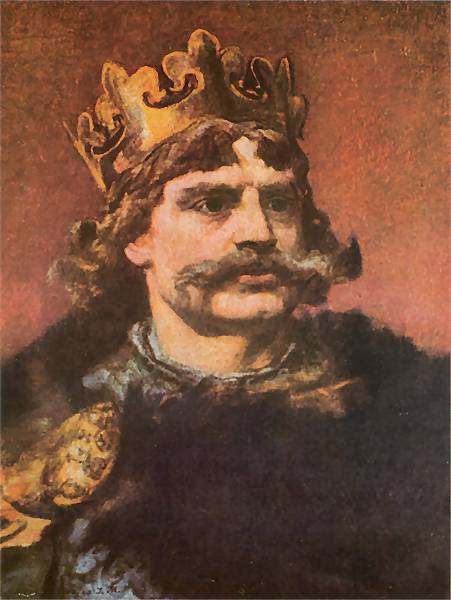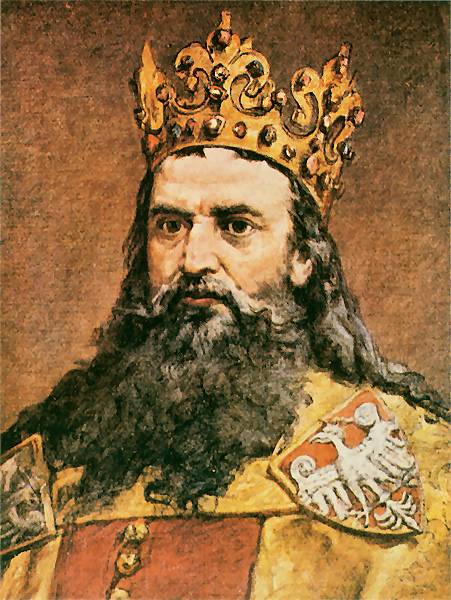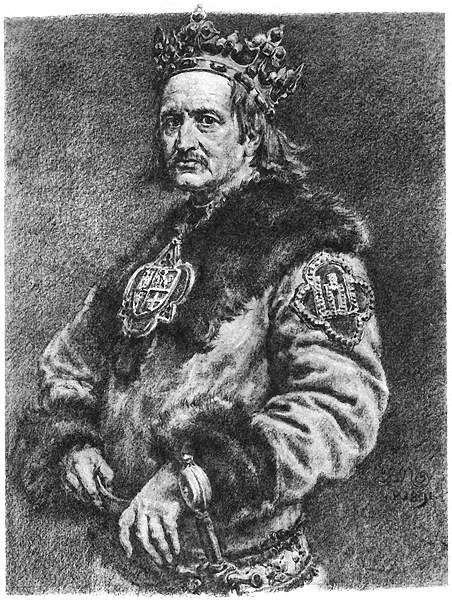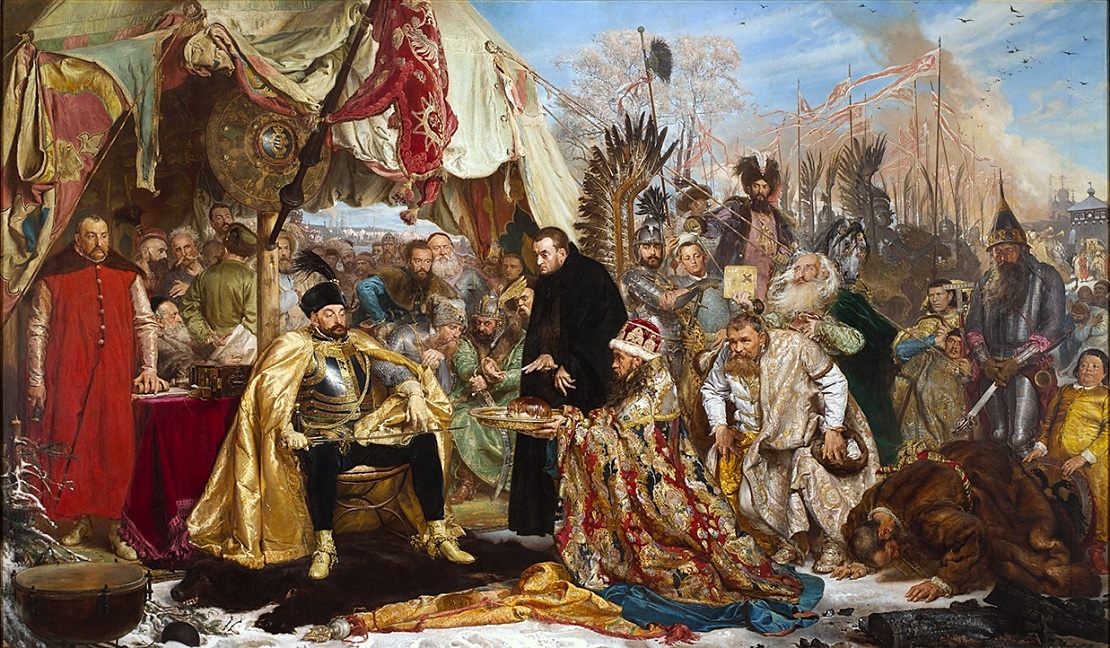(from the series of history lessons in broken English)
If "broken" is not so strong, it is thanks to James C.Whitworth :) Thanks, Cass!

Pieskowa Skała
You are, dear guests, in a country whose written history begins almost exactly 11 centuries ago.
The first ruler was the legendary Piast and his son, already historical, whose existence is proved only forty years ago,
Prince Siemowit, began to build a nine hundred years of future. The future of independent state.
When the independence of Poland was lost, it remained still as its "transitional problems". As for the latter determination, you must know that it is in the Polish language of color ironic. Actually - auto - ironic..
Because polish people are very self-ironic, self - critical people. They have low self-esteem and complexes. This is the result of lost independence, power, pride and glory of old centuries.
But ad rem.
Siemowit's grandson, Mieszko, in the year 966, 1046 years ago, was baptized and established the first capital in Gniezno. Do not crowned.
Because not everyone managed to be crowned king. Each crowned king - it was a confirmation of independence. And this independence was never completely safe. A thousand years of treatments. From this eight hundred of successful.
A thousand years ago, around the year 1000 the Polish borders were roughly like today.
Eight hundred years of the reign of kings, forty-four portraits of the rulers in our official RETINUE of kings and princes. Three dynasties, eleven elective kings, including elective Waza. On average - Polish king reigned about twenty years. In practice - from a few months - to a half of century.
First - Piast Dynasty - from the end of ninth century - 870 ??? - by 1386 - about five hundred years!
Second - Jagiellonian Dynasty - since 1386 to 1572 - nearly two hundred years
Third, "strange" elective - the Vaza, the three kings - the father and two sons: - eighty years (1587-1668)
And yet eight other elective kings - until year 1795.
Since the year 960, that is from the likely date of accession to the throne of the first documented Polish Prince Mieszko I - by the year 1795, when he resigned last Polish king, Stanislaw August, without putting up any resistance to the three powers in, Austria, Prussia (or Germany) and Russia - exactly 835 years.
Here's greatest kings, Golden Five:
Two Piast:
Boleslaw Chrobry (the Brave),
the son of Mieszko I (992 - 1025) - 33 years of rule, the first crowned king (1024), founder of the first regional power in the Oder, the Vistula, the Dnieper and Danube.
A friend of the Holy German Emperor Otto III, builder of the cathedral Archbishop of Gniezno, destined for Czech - Wojciech, the future saint Wojciech, who instead of becoming a Polish bishop, became a martyr.
His body was purchased by the king from the Prussia people paying gold with a weight equal to the weight of the body of the bishop.
After the death of Otto, King Boleslaw waged victorious wars of his successor Henry, until the conclusion of the peace (1018). Then he turned to the east and struck his sword at the gate of Kiev, making notches in it. Mieszko and Boleslaw, father and son lie in the cathedral in Poznan Tum, one leaning on the cross, the other on the sword.

Atak
Kazimerz Wielki (Casimir the Great),
son of Władysław Łokietek (Ladislaus the Short) - (1333-1370) - 37 years of rule, which were a long and fruitful, starting with the precarious position of ruler of two districts his father acquired - Little and Great Poland and dying, leaving the country strong in every respect: a modern, united and large, however, in danger.
Kazimierz reigned in a relatively quiet time, or maybe just his pragmatic rather than combative policy was conducive to such times. In any case, he built many fortified castles, especially in the line of Czestochowa - Krakow.
He is the proper creator of the First Republic - multinational, tolerant, open to the world, with educated and politically mature elite and with the first university. The one, who found Poland built in wood and left it made of bricks. Poland, then became the undisputed power for three hundred years until the Swedish Deluge (1655).But this will be discussed later.
Wladyslaw Jagiello (1386-1434), reigned 48 years, the longest of all Polish kings, almost half a century! Husband of the beautiful, beloved queen of Poles, Hedwig Anjou, who, in spite of foreign origin, reportedly even prayed in Polish. Queen , who funded restoration and improvement of the Cracow University (founded - 1364) with her ancestral jewels. The university is called today the Jagiellonian University.
Queen, like a wise queen of fairy tales, which, for the good of her kingdom, after great internal struggle, gave up on young love, She had the obligation but before she married Jagiello, had sent her most trusted courtier for reconnaissance.Zawisza of Olesnica had a closer look at the future monarch, Jagiello, took him up to the bath and told his mistress, "his face, the attitude and qualities," which completely calmed down Hedwig. She died young, one of her wishes was that Władysław married a granddaughter of Casimir the Great, Anna, and this is what happened.
Jagiello, Lithuanian - was beloved by all Polish people, however the Lithuanians, in turn, - not very much. And they're wrong. Deputy in mision from Polish lords revealed to him as the salvation of the Lithuanian nation, otherwise it would be a victim of the Teutonic order, just as the Prussians were. He was a good Litwin, a good Pole, the builder of a powerful state, the Republic of Two Nations, the founder of the Jagiellonian dynasty. Conqueror of the Teutonic Knights, the leader in one of the biggest battles, the most glorious of the Polish army, - the Battle of Grunwald (1410).
And two great elective kings:
Stefan Batory (1576-1586) - of the five kings - his Reign was shortest (10 years), some historians even believe that probably he did not die a natural death. Hungarien and the Great Pole, celebrated by our greatest poet of the Renaissance, John of Czarnolas (Orpheus Sarmatian).
Polish king, who did not speak Polish. During the stormy debates which took place in Latin, even sometimes when grabbing the sword, outraged at the audacity of speakers and recalling that he is not the painted king, when he reproached a certain priest that did not know Latin, the priest retorted that it’s even stranger that a Polish king does not know Polish. He showed great wisdom and political skill, talent of the military in the troubled times of war in the east (upper - Batory at Pskov, a painting by Jan Matejko) and build a rough friendship with the Hungarians, that survived until today.
"the Poles think, that although they had great benefits from the fair King Batory Reign, they suffered major damage - unbridled wantonness of the Hungarian army"- a witness wrote at that time.
John III Sobieski (1674-1696) 22 years of rule. The last Polish king, who tried with varying degrees of success, and in the end, without success, to rebuild the Polish power. Conqueror of the Turkish power, which at that time threatened not only Poland but the whole of Christianity and was able to conquer the Balkans and had already reached to Vienna.
It was his rescue of Vienna a most glorious victory, the last glorious battle of the First Republic, which probably saved Christian Europe from the hands of Great Power; the Muslim Ottoman Empire.
Toward the end of his life Sobieski tried to overthrow the power of the Turkish, but not being able to encourage Christian allies. When he died, Podole belonged to Poland. On the outskirts of Kamieniec, on the edge of Poland he built the Saint Trinity trenches. But he could not foresee that the former mortal enemy, after a hundred years woud turn into a loyal ally, who would never recognize Polish partitions.
Sobieski attempted to establish a new dynasty.That might reverse the disastrous course of events.Unfortunately, the nobility was staring at the golden freedom. Political reason was less and less.The subsequent kings Saxons and the last king, puppet Catherine, Stanislaw, they could not, or did not want to stop the fall.
Last battle in the Saint Trinity trenches, on the outskirts of Kamieniec was a hundred years later, between the Russian armies of Catherine the Great and the confederates from Bar, first insurgents trying to save Homeland from impending disaster.
The confederates were massacred by the Russians. Even the wounded.It should be noted that 100 years before the defenders were able to withdraw from the same fort Kamieniec with their guns.
And now, according to legend, each presentation at the Sultan Osmanii was accompanied by the Padishah question: "Where is the ambasador of Poland?"
And the answer was ever the same: "He has not arrived."
And now, according to legend, each presentation at the Sultan Osmanii was accompanied by the Padishah question: "Where is the ambasador of Poland?"
And the answer was ever the same: "He has not arrived."










Brak komentarzy:
Prześlij komentarz